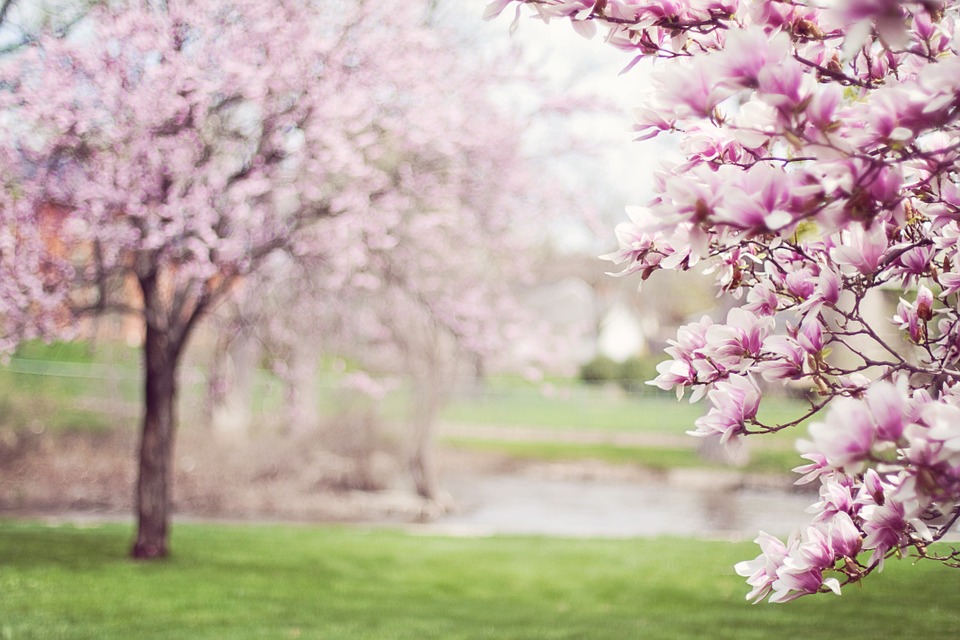Written by Admin and published on https://www.bioadvanced.com/
Sure, growing and maintaining a beautiful garden during the spring, early summer and autumn is a piece of cake… you have the warm temperatures and sunny skies on your side. Once the winter season rolls around, it can feel impossible or useless to keep up with all your hard gardening work. It doesn’t have to be that way with winter-blooming plants.
There are actually quite a few beautiful trees with flowers (and other flowering plants – check out upcoming blogs) that thrive during the winter’s harsh cold weather and improve your winter landscape. Their bare branches can produce beautiful red flowers or white blooming clusters of showy blooms.
Top Trees That Bloom In Winter & Fall
Fall’s cooler temperatures provide ideal planting conditions, and it’s a great time to select trees for their autumn color. Trees at your local nursery are showcasing the same hues they’ll display in your yard. You can also drive around town or visit a local public garden to find trees with foliage you like – it’s also a good way to see a tree’s mature form and size.
As you narrow your wish list for trees with fall color, consider selecting trees that also show strong winter traits to further increase your yard’s seasonal appeal. Trees that do double seasonal duty will have you savoring the show from fall until spring.
Chinese or Lacebark Elm(Ulmus parvifolia)
If you want an Elm that’s not susceptible to Dutch Elm Disease, plant this one. Fall leaf color varies from gold to orange to red, even purple. Exfoliating, mottled bark in shades of gray, green, orange or brown adds winter interest. The tree is vase-shaped; small leaves cast light shade. USDA Zones 5-10; 40-50 feet tall and wide.
Coral Bark Japanese Maple(Acer palmatum’Sango-kaku’)
Many Japanese Maples boast pretty autumn leaves, including the coral bark variety, which showcases gold fall foliage. In winter, this Japanese maple shines with coral-red bark. Bark develops the strongest color in full sun. USDA Zones 4-9; 12-20 feet tall, 12-15 feet wide.
Crape Myrtle(Lagerstroemia indica)
Crape Myrtle colors the summer and early fall landscape with lovely flowers in many shades. Autumn foliage offers yellow, orange or red tones. In winter, peeling brown bark exposes smooth, buff-colored wood beneath, creating a mottled effect. Arching branches offer an eye-catching form. Buy Crape Myrtle in bloom to ensure you’re getting the flower color you want. USDA Zones 7-10; 12-30 feet tall, 8-10 feet wide.
European Beech(Fagus sylvatica)
This stately pyramidal tree features leaves that turn golden bronze in autumn and linger on branches well into winter. Silvery gray, wrinkled bark creates a striking look in winter. Some cultivars have purple or variegated leaves. USDA Zones 4-7; 50-60 feet tall, 35-50 feet wide.
Japanese Stewartia(Stewartia pseudocamellia)
This selection provides multi-season interest with bronzy-purple spring foliage, Camellia-like blossoms in summer, and red and orange fall color. In winter, exfoliating bark displays patterns of white, beige and dark brown along the trunk. USDA Zones 5-8; 30-40 feet tall, 15-20 feet wide.
Paperbark Maple(Acer griseum)
This maple might be hard to find, but it’s worth the search. Fall leaves burnish bronze to brilliant red, and papery, peeling, cinnamon-colored bark looks lovely against winter snows. Branching is elegant and adds depth to winter landscapes. The peeling bark trait is strongest on younger trees. USDA Zones 4-8; 20-25 feet tall, 10-20 feet wide.
Serviceberry(Amelanchierspecies)
This native plant comes in various sizes, from shrub to small tree (15-20 feet tall). Look for cultivars of Allegheny Serviceberry (A. laevis) and Apple Serviceberry (A. x grandiflora) that offer blazing orange to red fall foliage. Selections to try include ‘Autumn Brilliance’ (15-25 feet tall), ‘Ballerina’ (to 20 feet tall), ‘Princess Diana’ (to 20 feet tall) and ‘Prince Charles’ (to 30 feet tall). Ridged bark is attractive in winter; a fine branch structure catches snow. Plants flower in spring, berries form in summer. USDA Zones 4-9; 15-20 feet tall and wide.
Sour Gum or Black Tupelo(Nyssa sylvatica)
This native tree ignites the fall landscape with foliage in brilliant shades of red, yellow, orange or purple. Nearly black bark with a blocky appearance adds appeal in the winter months. An excellent shade tree, Sour Gum resists insects and diseases but needs acidic to neutral, moist soil to thrive. USDA Zones 4-9; 30-50 feet tall, 20-30 feet wide.
Original post here https://www.bioadvanced.com/articles/top-trees-fall-and-winter-interest/.


